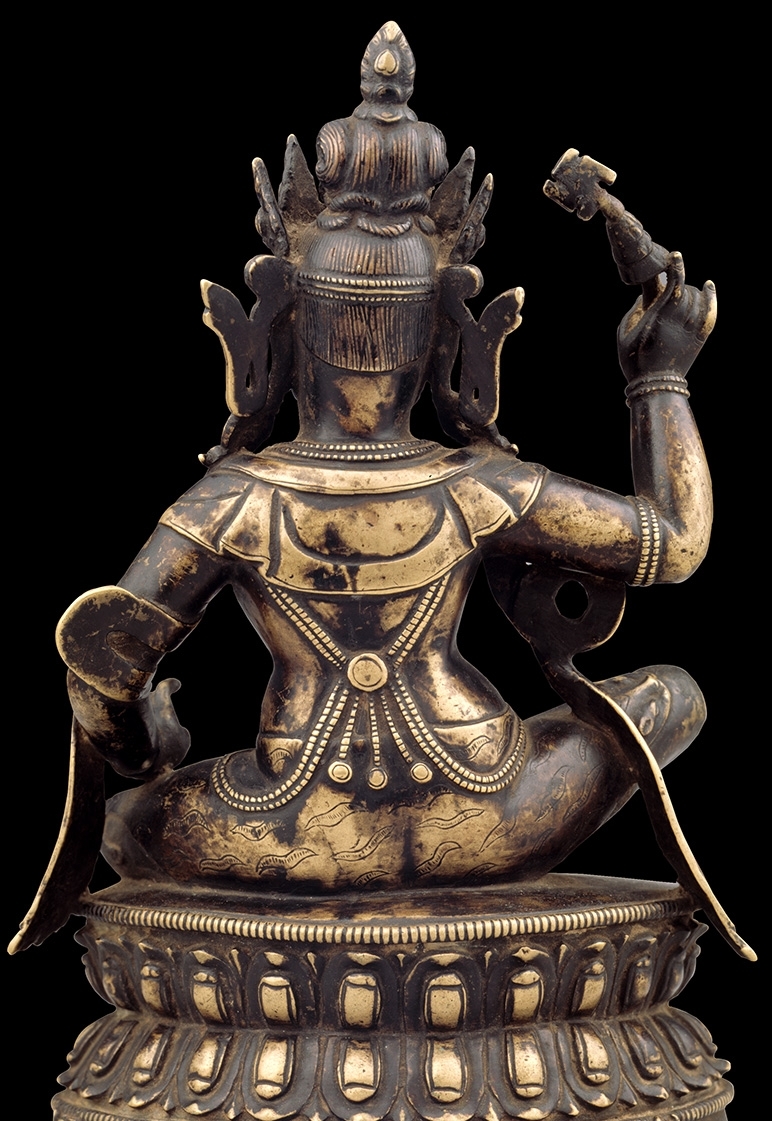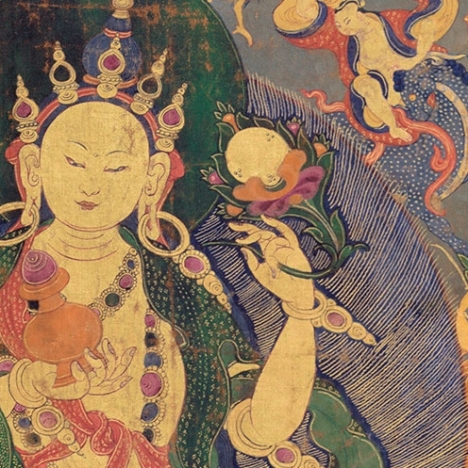
Drenpa Namkha, from the Zhang Zhung region of the Himalayan Plateau, is regarded as an emanation of the founder of Tibet’s Bon religion, Tonpa Shenrab. Comparable to Buddhism’s Padmasambhava, Drenpa Namkha is the most important early teacher of Bon. He has acquired a cult status and is both worshiped and portrayed in art as a deity with many forms. This sculpture demonstrates that the same artists made both Buddhist and Bon images, as Drenpa Namkha is depicted with the characteristics of Indian siddhas. As is typical of early Tibetan sculpture, the head of this work is disproportionally large, with the hair-knot high and set back and the ribbons of the figure’s crown floating up beside his head. In his upper right hand he grasps a parasol that is topped by a yundrung (swastika), the most important symbol of the Bon religion. The double-lotus base with long and narrow petals became popular in the early fifteenth century, especially at the Chinese court, and is here rendered in a simpler Tibetan style. Of special interest among the animals depicted along the base, seen in the view above, is a dragon, a rare theme at that time.
H 9 1/2 x W 6 x D 4 1/2 in.
C2003.31.1, HAR65183
- https://dev.rubinmuseum.org/images/content/725/c2003.31.1har65183-front-(a)__zoom.jpg
- https://dev.rubinmuseum.org/images/content/725/c2003.31.1har65183-back__zoom.jpg
- https://dev.rubinmuseum.org/images/content/725/c2003.31.1har65183-front-(a)__zoom.jpg
- https://dev.rubinmuseum.org/images/content/725/c2003.31.1har65183-back__zoom.jpg

__slider.jpg)

